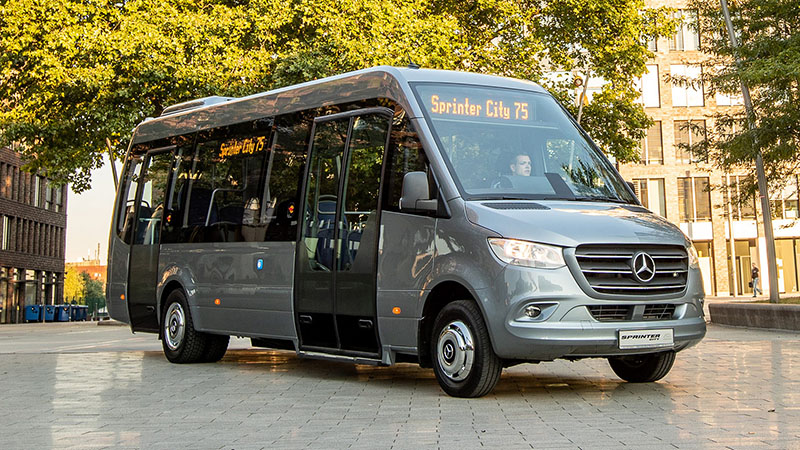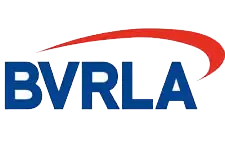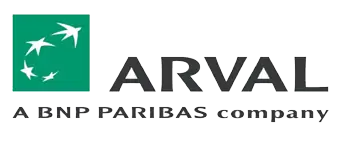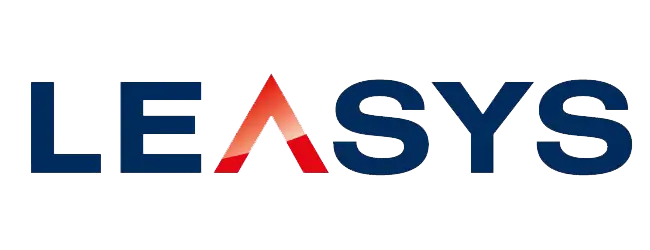Guide to Minibus Driving

This guide aims to support customers by ensuring they are
fully compliant with current minibus legislation in the UK and
EU countries.
Strict regulations govern minibus operation, this guide
helps you understand the key factors and issues. A motor vehicle with between nine and sixteen passenger seats is considered a minibus.
Who can drive a minibus?
Minibus driving entitlement depends on when you passed your driving test.
If you passed before 1 January 1997, you automatically gain D1 (minibus) or
A (before 1990) entitlement. You may drive a minibus if:
- You are 21 years old or over
- The minibus has no more than 16 passenger seats, and its gross weight does not exceed 7.5 tonnes
- If code 101 is next to the D1 category on your licence, you may not drive a minibus for reward or hire. The exception remains in place until the licence expires
If you passed after 1 January 1997, you DO NOT automatically receive the D1 entitlement. You may only drive category B vehicles with up to 8 passenger seats.
To drive a minibus with between nine and sixteen passenger seats, you must apply for a D1 entitlement.
To drive vehicles with more than sixteen seats, you need to take a PCV (passenger carrying vehicles) test and meet current medical requirements.
You do not need PCV entitlements under current rules when you drive a minibus for an organisation under the community bus permit scheme.
For more information on applying for a PCV, visit the Directgov website
Basic rule exceptions for drivers without a minibus entitlement
There are extremely limited circumstances where you may still drive a minibus without an A or D1 entitlement.
In the UK, volunteer drivers may operate vehicles with 16 passenger seats or less if they meet the following criteria:
- The minibus is used by a non-commercial body (such as charities or universities) for social purposes, and
- The driver is 21 years old or more, and
- The vehicle’s gross maximum weight does not exceed 3.5 tonnes or 4.25 tonnes if carrying specialist equipment for disabled passengers.
If the driver is 70 years old or older, they must meet the D1 health standards. You must declare conditions like diabetes, epilepsy, and coronary disease to the DVLA (Driver and Vehicle Licensing Agency).
If you are driving a minibus under these conditions, you must not:
- Tow a trailer, or
- Gain any payment for doing so other than claiming out of pocket expenses
21 is the legal minimum age for driving a vehicle carrying more than eight seated passengers.
If the driver has passed a PCV test, there are some scenarios where a driver under 21 could legally drive a minibus. These are:
- Driving without passengers for purposes like picking up or dropping off a rental vehicle
- Driving a regular service route that does not exceed 50 kilometres
- Driving a vehicle designed to carry no more than 16 passengers within the UK under section 19 or 22 permits of the PCV operator’s license.
CPC (Driver Certificate of Professional Competence)
Anyone driving a minibus on a commercial basis needs a CPC. The driver CPC allies across all EU member states. The idea is to improve road safety and maintain high driving standards.
Driver entitlements outside the UK
The UK driving licence entitlements are valid across the EEA (European Economic Area) and are valid in the UK if the driver leaves the country and returns later. The entitlements remain valid until the driver’s licence is renewed, such as when they reach 70 years old.
Driving licences issued in any other country
Visitors to the UK whose licences were issued within the EEA can drive a minibus in the UK if they have the correct entitlements. Residents whose licenses were issued within the EEA can drive a minibus:
- For five years after becoming a resident or until they are 45 years of age, whichever is the longer period.
- If they are over 45 but under 65 years old, they can drive a minibus until they reach 66 years old or for five years after becoming a resident, whichever is the shorter period.
- For 12 months if they are 65 or over.
PSV Operator Licence and Reward or Hire
What is a PSV operator licence?
A PSV or Public Service Vehicle operator licence lets you drive minibuses with more than eight passenger seats for reward or hire. The PSV covers all forms of commercial activity, including public and local authorities, statutory undertakings, and other commercial undertakings. Privately run minibuses where passengers do not pay in cash or in-kind are not covered. You can contact your local authority’s PSV section for more information.
When is a PSV operator licence required?
A PSV operator license is needed if the vehicle is a public service vehicle being driven for reward or hire. A public service vehicle is a motor vehicle that is:
- Adapted to carry more than eight passengers and the driver and carries passengers for reward or hire, or
- If not adapted, it is used to carry passengers for reward or hire at individual fares as part of a person carrying business.
PSV operator types
There are several PSV operator licence standards:
- Standard licence for UK national and international operations
- Standard licence for UK national operations only
- Restricted licence for just small operations that are not in the passenger transport business
- Special licence for taxi licence holders only
Applying for a PSV operator licence
You need to fill in Form GV79 and provide a PSV421 to apply for a new licence. You can obtain forms from your TAO (Traffic Area Office). Send the completed form and application fee to the Leeds Licensing Office, Hillcrest House, 386 Harehills Lane, Leeds, LS9 6NF. You should ensure at least nine weeks between your application and the date you need the licence. Visit www.vosa.gov.uk for more details.
Obtaining a PSV operator licence
Your application needs to meet several detailed requirements, including fitness to hold a licence, control of drivers’ hours, maintenance arrangements, overloading and records, financial resources, and suitability of operating centre.
Reward or Hire
Understanding reward or hire can be complex. However, it generally involves money’s changing hands in return for passage. It could include:
- Paying a bus operator, driver, or third party like a social group treasurer or travel agent
- Contributing to the hire of a vehicle which will carry you as a passenger.
- Paying for a package deal that includes the use of a bus, including an airline courtesy bus, hotel transport, or vehicle rental
- Securing the right to use a minibus, even if it is never exercised, such as paying a contractor to deliver a service to move staff from one site to another
Customers may want to consider these areas before using a minibus to determine where a PSV licence is needed.
Works buses
Buses used to transport agency workers or employees are a grey area when it comes to reward or hire. It is usually considered reward or hire, if:
- The driver is paid an identifiable sum for carrying passengers
- The driver’s job title implies driving responsibilities.
Where neither of these is applicable, the operator wouldn’t fall under the definition of reward or hire, and the PSV operator licence would not be required.
Furthermore, to not fall under the PSV operator licence, the employer would need to run the bus service themselves. Only employees would be able to use it – consultants and private contractors would not be able to travel on the bus without compromising its situation.
Rental company’s own use of a minibus
When a rental company collects or delivers a minibus or makes other internal trips, including delivery between branches or driving to annual testing, this is not classed as driving for reward or hire, assuming no passengers are being carried. Passengers would include fellow employees.
If a rental company uses a minibus as a courtesy bus to pick up passengers and take them to the rental office, this would be considered a reward or hire. You would need a PSV operator licence. However, if the vehicle had less than nine passenger seats, the vehicle does not come under PSV regulations and therefore is outside the scope of the PSV operator licence. However, local authority licencing still needs to be considered.
Impounding
VOSA (Vehicle and Operator Services Agency) has legal powers to impound minibuses or goods vehicles driven on public roads without operators’ licences. Once impounded, vehicles may eventually be subject to disposal or sale.
Owners of impounded vehicles are within their legal rights to apply for the vehicle to be restored to them. Leased or rental vehicles will only be restored to the legal owner if they can demonstrate that they were unaware the vehicle was being illegally operated when it was impounded.
Notification to detain
VOSA first issues a pre-impounding notification. This alerts all interested parties that it suspects the vehicle of being operated without a valid PSV licence. The vehicle owner needs to act on the notification, responding with the steps they have taken or will take within 14 days of the notification. If VOSA does not hear from the vehicle owner within 14 days, the vehicle is targeted for impounding.
Fast-track procedure
After 14 days, if the vehicle is still being operated illegally, VOSA will impound it. The vehicle can be returned swiftly if VOSA has been kept informed through documentary evidence of the owner’s efforts to retrieve the vehicle from the customer. The rightful owner also needs to fill in the appeal form and provide proof of ownership.
If the owner does not react to the pre-impounding letter or any of the above are unavailable, the vehicle may become subject to the formal impounding and appeals procedure.
Minibus and Community Bus Permits
Minibus permits enable specific groups to charge passengers without complying with the full PCV operating licence requirements and their drivers having PCV entitlement. The minibus permit is for vehicles carrying between eight and sixteen passengers. You can obtain it from the Traffic Commissioners or designated bodies, including national charities, local authorities, and church organisations.
There are two types of permits:
Section 19 permit
Community bus and minibus permits are issued to organisations concerned with activities that benefit the community, including recreation, social welfare, religion, and education.
You must provide services for the organisation’s members or the people they serve. You cannot offer the service to the general public, and any charges need to be made on a non-profit basis. Registered charities are among the groups that usually qualify.
You can use smaller vehicles like MPVs and cars under a section 19 permit to carry passengers who pay individual fares. All permits issued on or after April 2009 are only valid for a specific period of no more than five years from the valid from date. The issuing body decides the exact period of the permit.
Section 22 permit
A section 22 permit is a community bus permit that enables a local bus service to run on a non-profit, voluntary basis with unpaid drivers.
You can access more information about both types of permits on the VOSA website
Drivers’ Hours
Minibus drivers need to monitor the number of hours behind the wheel and ensure they take rest periods that satisfy domestic or EU rules on drivers’ hours. Leasing or rental company employees moving vehicles in the UK without passengers would only need to observe domestic drivers’ hours.
EU drivers’ hours
Under current regulations, minibus drivers driving on a commercial basis must comply with EU drivers’ hours. Commercial basis is understood as using the minibus for any business that operates on a for-profit basis, including taking holidaymakers from the airport to their destination or shuttling workers from one site to another.
When you take a vehicle abroad, you must observe EU drivers’ hours regardless of the bus’ use. However, if you are driving regularly under these rules it is recommended that you seek further advice from VOSA. The following table outlines the basic requirements.
| Driving breaks | After no more than 4.5 hours of driving, a break of at least 45 minutes must be taken. You can split the rest into two periods – the first must be at least 15 minutes and the second at least 30 minutes – you must take both over the 4.5 hours. |
| Daily driving | No more than 9 hours – extended to 10 hours no more than twice a week. |
| Weekly driving | No more than 56 hours |
| Two-weekly driving | No more than 90 hours over any two-week period |
| Daily rest | No less than 11 hours – reduced to 9 hours no more than 3 times between weekly rests. You can split this into two periods, with the first being at least 3 hours and the second at least 9 hours. You must complete the rest period within 24 hours of the end of the last daily or weekly rest period. |
| Daily rest with more than one driver (multi-manning) | You must take a 9-hour daily rest within a period of 30 hours that starts from the end of the last daily or weekly rest period. For the first hour, the presence of another driver is optional, but it is compulsory for the rest of the time. |
| Daily rest train / ferry | A regular daily rest period of at least 11 hours, which may be interrupted twice by other activities of no more than 1-hour total duration, assuming the driver has access to a couchette or bunk. |
|
Weekly rest |
A regular weekly rest of at least 45 hours or weekly rest of at least 24 hours must start no later than the end of six consecutive 24-hour periods from the end of the last weekly rest. In any two consecutive weeks, the driver must have a minimum of two weekly rests, one of which must be for at least 45 hours. A weekly rest that falls across two weeks may be counted in either week but not in both. Any reductions must be compensated in one block by an equivalent rest added to another rest period of at least 9 hours before the end of the third week following the week in question. |
EU drivers’ hours’ exemptions
There are several exemptions from the EU drivers’ hours. In some cases, you must follow domestic drivers’ rules instead. The Department for Transport can provide further guidance on the complete list of exemptions.
| Exemption | Detail | Alternative rules |
| Vehicle carries passengers on a regular service not exceeding 50 kilometres | Need to demonstrate the service runs to a timetable, along a predetermined route, with passengers being taken to and from set points | Domestic |
| Vehicle driven by company employee who is never engaged in carrying passengers | Examples include vehicles being taken for testing by a rental company, being moved between branches, or vehicles being collected or delivered. | Domestic |
| Vehicles driven by volunteer drivers under section 19 or 22 permits | Including scout groups, schools, or any other organisation concerned with social welfare, education, recreation, religion, or other activities with community benefits. | None |
| Vehicles driven by employed drivers under section 19 or 22 permits | As above | Domestic |
| Vehicles used by armed forces, fire, and police | Any minibus usage that relates to these services | None |
| Vehicles used for medical purposes, rescue operations, or emergencies | Any minibus usage that relates to these services | Domestic |
Domestic drivers’ hours
Domestic drivers’ hours apply when a driver is exempt from EU drivers’ hours. Drivers are required to keep records of hours, but a tachograph is not necessary. You can record the time spent on duty and driving on a sheet.
An individual should be assigned to sign off the record sheets weekly, and the employer and the driver should keep copies. Drivers are recommended to keep two weeks’ work of records while driving, and employers should keep records for at least one year.
Agency drivers
Drivers employed through an agency for internal minibus movements without passengers must observe domestic drivers’ hours. EU drivers’ rules apply if they move passengers.
| Daily driving | 10 hours on any working day. |
| Continuous or cumulative driving | You must take a break of at least 30 minutes after 5.5 hours of driving. Within an 8.5 hour working day, breaks must add up to at least 45 min – the driver must not drive for more than 7.45 hours. Additionally, the driver must break for at least 30 min at the end of this period unless it is the end of the working day. |
| Length of working day (spread over) | No more than 16 hours between starting and finishing work (including work other than driving and off-duty periods). |
| Daily rest periods | 10 hours continuously between two working days, reduced to 8.5 hours no more than 3 times a week. |
| Fortnightly rest periods | There must be at least one period of 24 hours off in any two consecutive weeks (Monday to Sunday). |
Tachographs
Tachographs record hours driven and rest periods under the EU drivers’ hours regime.
There are two types of tachograph:
Analogue – paper discs inserted into the tachograph record hours driven and rest periods. Analogue tachographs can only be fitted in minibuses registered prior to 1 May 2006.
Digital – a driver card inserted into the tachograph records the information. Digital tachographs are fitted into all minibuses registered on or after 1 May 2006.
The DVLA provides driver cards for a fee. They usually take around two weeks to arrive. You need application form D777B for a driver card and D779B for a company card.
When renting, you need to consider the type of tachograph in the vehicle. If fitted with a digital tachograph, you need to ensure all minibus drivers have access to a driver’s card if observing EU drivers’ hours. It is an offence for anyone to drive a vehicle equipped with a digital tachograph and not be issued a driver card where the EU drivers’ rules cover the user.
Driver cards are required when taking a minibus fitted with a digital tachograph abroad.
Drivers who do not come under the scope of EU drivers’ hours are not legally required to use a tachograph. However, if other drivers use the vehicle under EU drivers’ rules, it is good to keep track of who is driving, the vehicle’s use, and the mileage in case the vehicle is subject to a VOSA inspection. Drivers can achieve this by either using the out-of-scope mode on a digital tachograph, which doesn’t require a driver’s card or using a tachograph chart in an analogue tachograph.
Recording hours when using a minibus abroad
You must use a tachograph for the entire journey, regardless of whether it starts or finishes inside or outside the UK. You must use a new disc every day for an analogue tachograph. For digital tachographs, remember driver’s cards can take up to two weeks to arrive once applications are submitted.
Seatbelts
All minibuses registered after October 2001 must, by law, have inertia-reel three-point seat belts fitted to all seats. Minibuses registered prior to this date must have fitted seatbelts in the rear where the vehicle carries children.
Who is responsible for seat belt compliance?
You must use appropriate adult seat belts or child restraints when sitting in the front of all vehicles.
For small minibuses (unladen weight of 2,540kg or less), passengers sitting in the rear must wear the provided seatbelts.
It is the driver’s responsibility to ensure that:
- Children under three years old use appropriate child restraints
- Children between 3 and 11 years old and under 1.35 metres use appropriate child restraints or seatbelts if child restraints are not available
- Children between 12 and 13 years old or younger children 1.35 metres and over use the seatbelts provided.
Over the age of 14, passengers are legally responsible for ensuring they wear a seatbelt.
All passengers, including adults, are strongly advised to use appropriate child seats or seat belts on every journey.
Seat belt requirements are the same in coaches and larger buses over 16 passenger seats. However, the driver is exempt in vehicles with more than 16 passenger seats.
Coach, bus and minibus operators are required to take reasonable steps to notify passengers of the need to wear seat belts in one or more of the following ways:
- An audio-visual presentation or official announcement as the passenger joins the service or within a reasonable time of the passenger doing so.
- A prominently displayed sign at every passenger seat equipped with a seat belt. There are no size requirements for these signs.
If no signs are included in a hired minibus, operators will need to ensure they make a clear announcement, as stated above.
Fire extinguishers
Minibuses must carry suitable apparatus for extinguishing fire. These must be maintained in good working order and easily accessible. The extinguisher must be tested in line with the manufacturer’s schedule, usually annually. Fire extinguishers must comply with British Standard BS 5423: 1977, BS 5423: 1980, or BS 5423:1987. It must have a minimum test fire rating of 8A or 21B. The extinguisher must contain foam or water, not dry powder.
Maintaining a roadworthy vehicle
As a vehicle driver or operator, you are responsible for ensuring the vehicle you use is roadworthy. Operating an unroadworthy vehicle on the road is an offence.
Basic daily checks should include:
Undertaking a daily ‘walk around check’ before using the vehicle. You must put right faults before operating the vehicle. A reporting system for recording defects that affect roadworthiness must be in place.
Regular safety inspections:
A roadworthiness inspection can be limited to those aspects that affect specific environmental issues and road safety. You should undertake these inspections separately to routine repair and serving. Inspections can also form part of a more comprehensive inspection that includes all items covered under an annual statutory test.
For PSV operator licensing purposes, the user is responsible for the vehicle’s roadworthiness and safety whenever the vehicle is in use. You can find further details of the inspection types recommended by VOSA on the Department for Transport website
Clear service procedures must be in place to ensure regular serving and maintenance in line with a set schedule, including MOT tests. It must also satisfy the manufacturer’s recommended service intervals. VOSA produces test inspection manuals for annual tests. These include inspection methods and criteria for passing and failing. Maintenance work and safety inspections can occur at your own or an external workshop.
Removing seats
You can remove seats from a minibus. The temporary removal of seats does not change its classification. If you permanently remove seats, its tax class must be reclassified with the DVLA (Driver and Vehicle Licensing Agency), and the minibus will need to be tested. Contact your local DVLA office for more information.
It is an offence to carry passengers in a way that potentially puts them in danger. If you remove seats to increase the luggage space, you must ensure the luggage is stowed safely and cannot move around the vehicle’s interior. Statutory requirements include passengers having access to at least two vehicle exits.
Maximum speed limits
| Minibuses, buses, and coaches (12 metres in length and under) |
Built-up areas 30mph |
Single carriageways 50mph |
Dual carriageways 60mph |
Motorways *60mph |
*Minibuses registered in or before 2001 can travel up to 70mph on motorways
Overloading (Vehicle Safety)
Most minibuses have a predetermined maximum GVW (gross vehicle weight). If you exceed this, you are overloading, which is illegal. The operator and the driver are responsible for ensuring the vehicle is not overloaded. Anyone else who permits or causes the vehicle to become overloaded may also be charged with committing an offence. Potentially, this also includes rental companies.
Overloading can damage vehicles and put the driver and other road users at risk. Overloaded vehicles can:
- Be less stable, more difficult to steer, and take longer to stop. When maximum weights are exceeded, vehicles react differently.
- Have additional strain on their tyres. Overloading causes tyres to wear more rapidly and overheat, increasing the risk of dangerous, premature, and expensive failure.
Overloading a minibus or allowing a minibus to become overloaded carries a fine of up to £5000. If overloading results in a death, the operator and the driver face charges of death by dangerous driving or manslaughter, which can carry jail terms.
You can take several steps to avoid overloading:
- Be aware of the vehicle’s weight limits
- Check the loaded weight before heading out
- Where possible, weigh the vehicle and determine the maximum load permissible per axle. You can seek assistance with this, but the responsibility still ultimately remains with the driver.
Taking minibuses abroad
As well as observing drivers’ hours, it is essential that you carry the correct documentation when you take a minibus abroad. When journeying into EU member states (and Norway or Switzerland), you need the following documents:
When hiring a minibus for a short period
- You need a waybill – This is available in books of 25’ top and copy’ sets from the CPT (Confederation of Passenger Transport). You must complete a waybill for each vehicle prior to it making an international journey. The driver must carry the top copy throughout the journey to show that it is an international journey and exempt from local licensing rules in any countries it passes through. The operator retains the book with the carbon copy. Contact the CPT on 0207 240 3131 during office hours to purchase the book and be supplied with a sheet showing how to fill it in.
- If you have your minibus under a long-term rental or lease agreement, you need an own account certificate. International journeys undertaken within the EU by non-profit bodies to transport their members in connection with their social objectives, or by a company for the moving around of goods or its employees. As long as the transport is not the operator’s main activity, you can undertake the journeys under an own account certificate. The vehicle-specific certificates are valid for up to five years and are available from the DfT’s International Freight Office on 0870 6060440. You do not need a waybill if you are entitled to use an own account certificate.
- VE103 – this document acts as a legal substitute for the V5C. It confirms that the driver and passengers have the consent of the registered keeper to take the vehicle abroad. The vehicle could be impounded if you cannot produce the document.
- Proof of Insurance – Green Card – these are not compulsory in the EU, but some other countries require them. Evidence of insurance or an international insurance certificate confirming that third party insurance is current for the vehicle is necessary.
- Visas and passports
- Driving licence – Drivers should carry their licence showing A, D, or D entitlement. If the entitlement is not shown, drivers should obtain form INTP4 from their local traffic area office confirming they have at least one year’s minibus driving experience. You should get an official translation for older-style license holders. Alternatively, drivers should hold an international driving permit.
- Tachograph – you must use this to record rest periods and hours driven from the start of the journey in the UK to the end of the journey in the UK.
Additional items
Each country across the EU has its own requirements on items you must carry. Check the specific requirements of each country you pass through to ensure you stay within the rules. In some countries it is compulsory to carry supplies of water and fuel, reflective jackets, warning triangles, fire extinguishers, and fuses.









